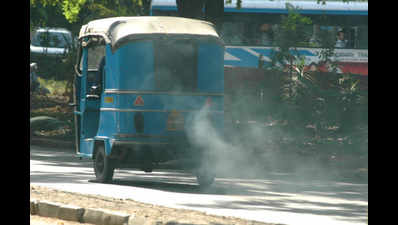- News
- City News
- chandigarh News
- PGI-Chandigarh, Panjab University study lockdown's impact on air pollution
Trending
This story is from August 28, 2020
PGI-Chandigarh, Panjab University study lockdown's impact on air pollution
The levels of all major air pollutants in the city dropped during the first and second lockdowns. Sulphur dioxide, ozone, and m,p-xylene were some exceptions

Vehicular emissions were a primary source of air pollution during the later phases of lockdown
This was the outcome of a lockdown impact study of the ambient air quality. The Panjab University environment studies department conducted it along with the community medicine department of the Post Graduate Institute of Medical Education and Research (PGIMER) and Chandigarh Pollution Control Committee.



The study duration was divided into four parts, that is 21 days
before lockdown, 21 days of the first lockdown, 19 days of the second, and 14 days of the third. The percentage decrease in the concentrations during lockdowns 1, 2 and 3 was 28.8, 23.4, and 1.1 for PM2.5. It was 36.8, 22.8, and 2.4 for PM10, and 23, 16.5, and 6.1 for nitrogen dioxide, compared with the average concentrations before the lockdown.
PU environment studies department chairperson Suman Mor, lead investigator, said: "Vehicular emissions were a primary source of air pollution. The regional atmospheric transfer of pollutants from coal-burning and stubble burning were secondary sources."
Dr Ravindra Khaiwal, additional professor of environment health at the PGI, who coordinated this study, said the reduction in air pollution was linked to the decline in local emissions and frequent rainfall. The increase in ozone concentration seems to be associated with intense solar radiation and high temperature, which enhances the atmospheric reactivity. This improved the ozone concentration not only in Chandigarh but also in many other cities.
End of Article
FOLLOW US ON SOCIAL MEDIA










